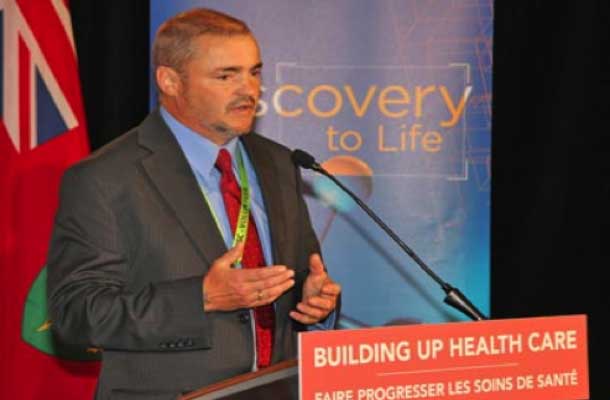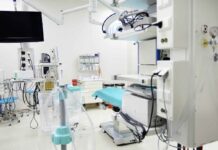

THUNDER BAY – HEALTH – Part of the Thunder Bay Regional Research Institute’s mission is to enable patient-centred medical research that will make Thunder Bay and Northwestern Ontario healthier, wealthier, and smarter. This article is Part 1 of a three-part series examining how the TBRRI does just that.
When people think of research making patients “healthier”, it’s always assumed that we’re referring to long-term health – that today’s breakthroughs become tomorrow’s new treatments. That is certainly true, but research also has a direct impact on the care people receive today.
Keith Taylor, a Patient and Family Advisor (PFA) at the Thunder Bay Regional Health Sciences Centre and Co-Chair of the Advisory Council, said that there is a strong connection between the care our patients receive and the research going on at the TBRRI and the Health Sciences Centre.
“Sometimes, as a patient lying in a hospital bed getting treatment, research is the furthest thing from our minds. But it is so important and so true that the research going on here really does translate to the bedside,” Taylor said. “Besides clinical trials, which is the obvious kind of patient-directed research, researchers here are developing new techniques of diagnosing and treating conditions like COPD, heart and stroke, cancer, Alzheimer’s, and other diseases that most affect people in Northwestern Ontario.”
Local research also brings new equipment that would not be accessible otherwise. The new cyclotron for example will have a direct impact on patient care when it is operational. The cyclotron produces medical isotopes that help identify and monitor specific tissues such as cancer cells during PET-CT scans and other nuclear imaging tests.
However, these medical isotopes are only useful for a very short time after they are produced. In order to have enough material to scan four patients, 32 doses are actually shipped from southern Ontario to the Health Sciences Centre. If there is a delay due to weather, mechanical problems with the plane, or any number of different scenarios, the material decays to the point where it is no longer useful. Those patients booked for nuclear imaging tests will have to be rescheduled. Having a secure supply of medical isotopes across the parking lot instead of across the province will avoid delays and be more cost effective.
Research also attracts physicians who want to be part of a dynamic healthcare environment, and perhaps pursue some research of their own to the benefit of patients.
Premier Kathleen Wynne visited Thunder Bay on July 30, 2014 to announce new funding – $4 million in total – for the cyclotron as well as continued funding for the TBRRI.
“[This investment] will continue to enhance Thunder Bay’s reputation and role as a centre for advanced medical research and it will improve healthcare in Northwestern Ontario,” Premier Wynne said. “It really is an enhancement of the Thunder Bay Regional Research Institute that had done so much already.”
Taylor agreed.
“People throw around the phrase ‘world class’ but after talking with people at various conferences across North America, I see that the work going on at the TBRRI really is some of the most advanced research going on in the world in medical imaging,” Taylor said. “It is also based on our regional health needs. They’re not just doing abstract research in a lab; they’re focused on finding new treatments that will directly benefit our patients.”






